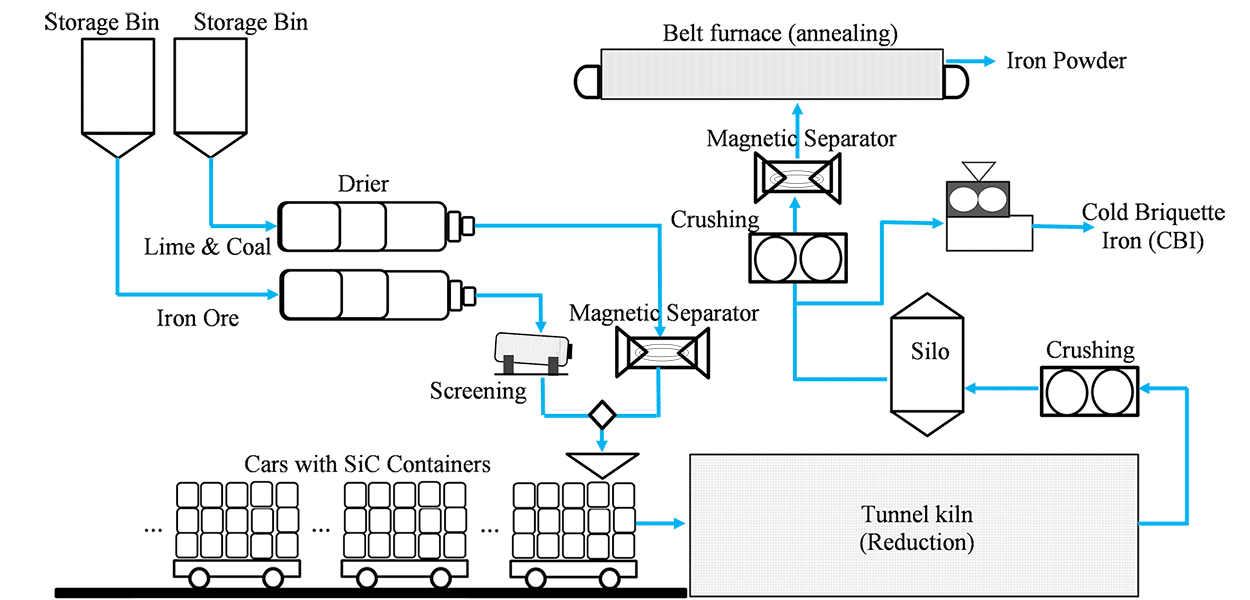Sponge iron production in tunnel kiln
Introduction
Sponge iron production by tunnel kiln method was developed from 1911 as Höganäs method in Sweden. After many modifications, now this process is a sufficient and effective method for sponge iron production. The main advantage of tunnel kiln process is the possibility to build small plants with low investment costs which are feasible economically.
Due to Iran prospect of producing 55 million tons steel until 2020, direct reduction processes have been developed in Iran and sponge iron is a very good charge for steelmaking furnaces instead of iron scrap.
Possibility of using both magnetite and hematite ores, using different grades of coal and natural gas as the process main fuel are advantages of sponge iron production in tunnel kiln.
Researches and experimental operations in Aramico Company result in construction of sponge iron production pilot plant. In this plant Tabas iron ore and coal was used to sponge iron production by tunnel kiln method. Engineering design and construction of sponge iron production line by tunnel kiln method is operated by Aramico technical and engineering group.

Application
Sponge iron is an ideal charge in steelmaking industries and it is used for making different grades of steels like: stainless steels, tool steel, bearing steel, springs steel and other alloy steels. Using sponge iron instead of iron scrap in steelmaking furnaces has many advantages include:
- Uniform chemical composition
- Less inclusion and impurities
- Less environmental problems
Although iron powder could be produced in sponge iron tunnel kiln production line and it is the main raw material for powder metallurgy production lines.
Process
In sponge iron production plant by tunnel kiln method, after crushing and screening raw materials, iron ore, coal and limestone are mixed and charged in storage bins in certain ratios. By using an automatic charging system, raw materials mix is charged in SiC crucibles. These crucibles are transported by wagons to the tunnel kiln and after preheating, reduction, and cooling, sponge iron is produced. The product is crushed and could be produced as iron powder or sponge iron cold briquettes.

Material handling and storage equipment, magnetic separators, screens, tunnel kiln, burners, wagons, SiC crucibles, charging and dis-charging systems, crushing and milling machines, briquetting machine and iron powder reduction furnace are the main machineries of sponge iron production plant by tunnel kiln method.
By identifying opportunities, conducting thorough research and performing tests at different levels we are developing technical knowledge for many industrial processes in the field of metallurgy, mining and renewable energy.
ARAMICO